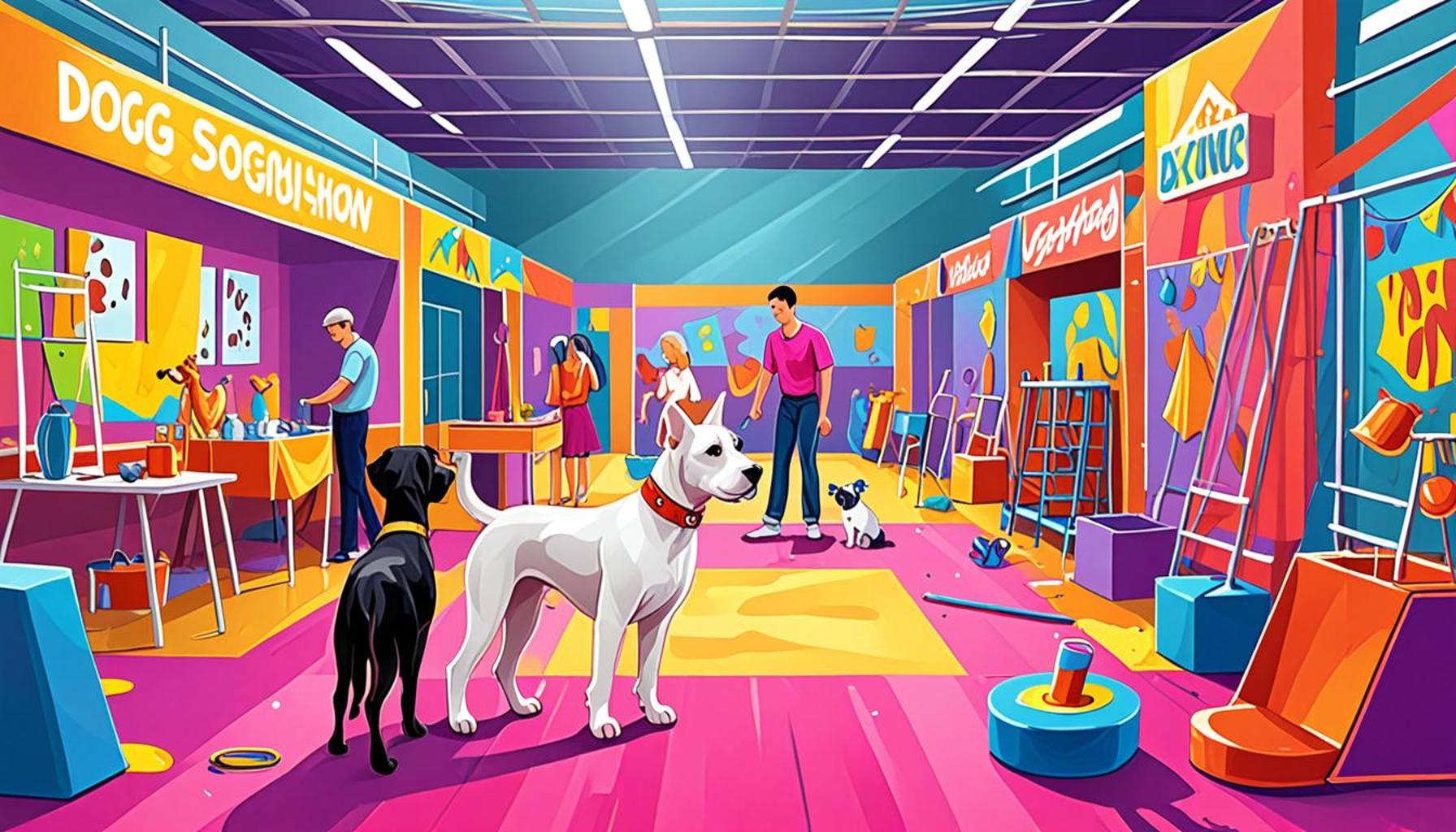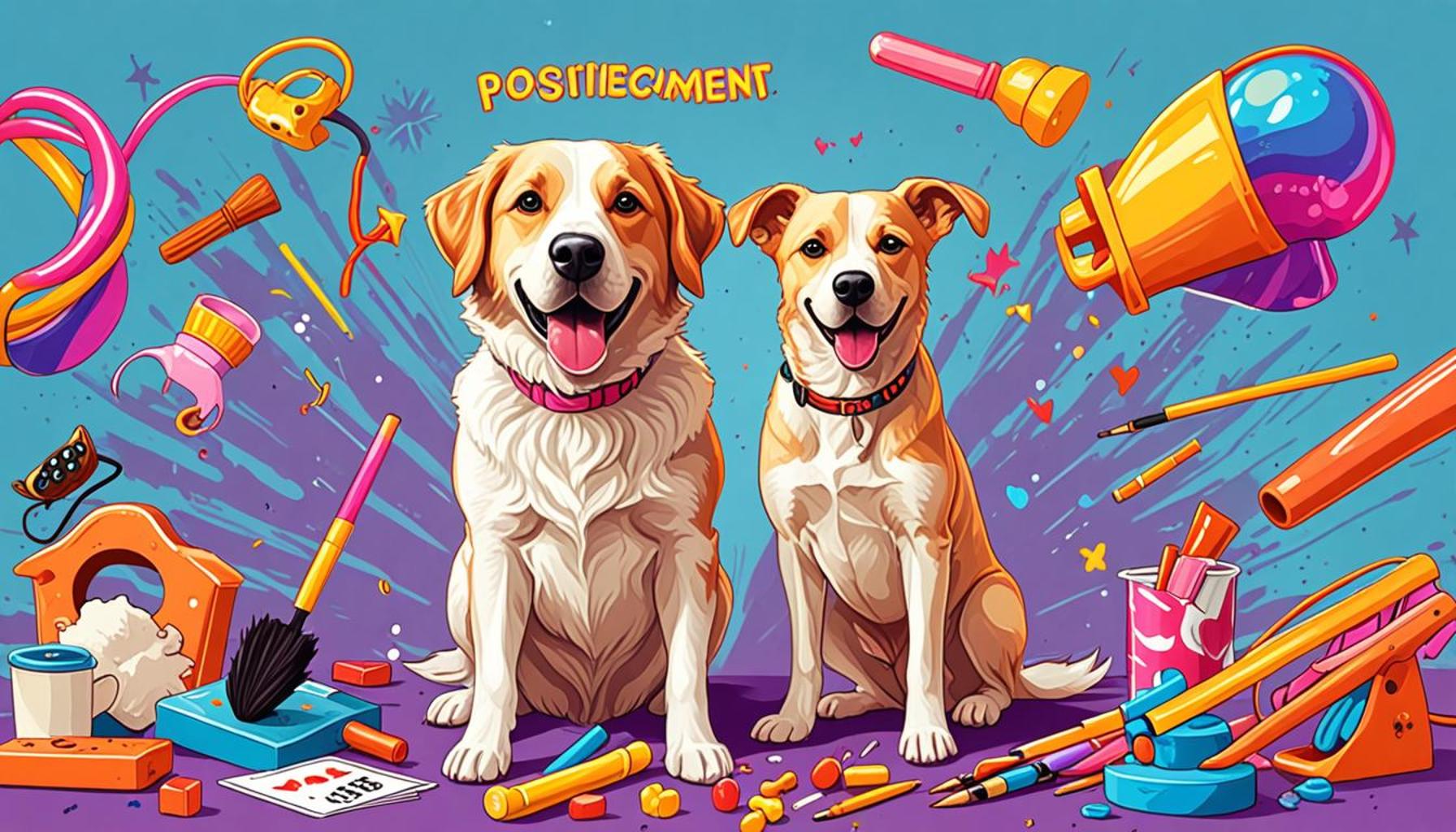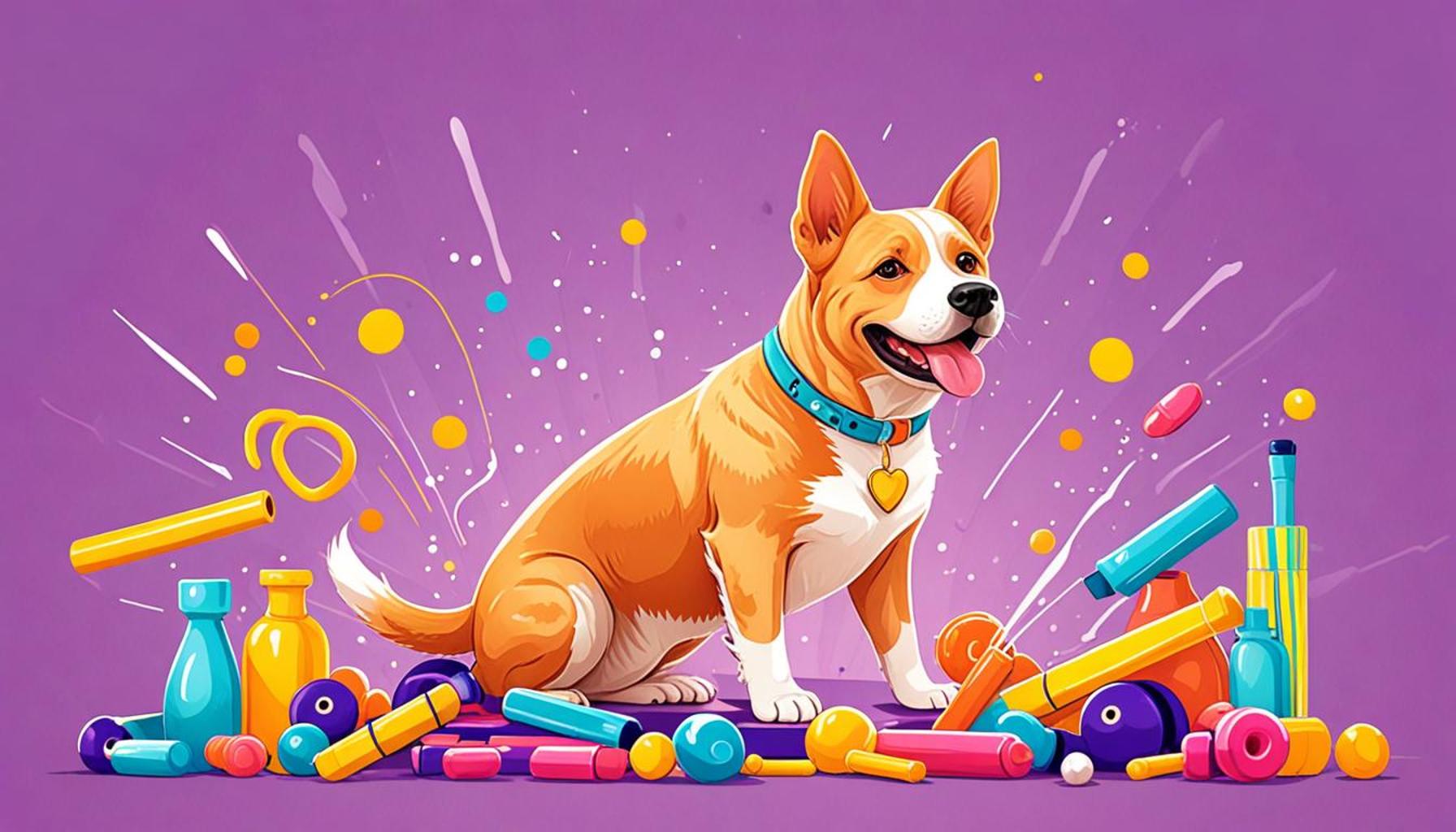Presentation Training for Dogs: Preparing for Competitions and Shows

Unlocking Potential in Dog Competitions
Every dog has unique traits that can shine in the spotlight, but without proper training, these attributes may remain hidden. Presentation training for dogs is crucial to help showcase your pet’s best qualities during competitions and shows. A well-prepared dog not only impresses judges but also captivates audiences.
Why Presentation Training Matters
Participating in dog shows and competitions requires more than just a well-behaved pet. Consider these key aspects:
- Posture and Movement: Dogs must demonstrate grace and poise while on the move. This includes learning how to trot in a way that highlights their physical attributes, such as their coat, structure, and overall health. A smooth gait can dramatically improve a dog’s overall score in the eyes of the judges.
- Grooming Skills: A well-groomed dog stands out among competitors. The importance of coat care, which can vary by breed, cannot be overstated. For instance, a poodle’s signature curls need specific grooming methods, while a Labrador retriever benefits from regular bathing and brushing to maintain a healthy sheen. Owners should be proactive about learning tailored grooming techniques to ensure their dog looks its best.
- Handler Communication: Connection between the dog and handler is essential. Successful dog competitions require more than individual skill; they hinge on a synergistic relationship. Handlers must learn effective signals and commands that not only direct the dog but also build trust, ensuring that the dog feels confident and secure in the ring.
Preparing for a competition takes time and dedication, but the rewards can be exhilarating. From adrenaline-pumping moments in the ring to the joy of accolades, every pet owner can track their dog’s growth through training. Successful competitors often speak to the incredible bond they develop with their dogs over countless training sessions. Such relationships not only enhance performance but also contribute to the well-being of both handler and dog.
This article will delve into effective methods and techniques that elevate your dog’s presentation skills for competitive success. Techniques such as positive reinforcement, clicker training, and consistent socialization play vital roles in shaping a dog’s confidence and readiness. Joining local clubs or attending workshops can also offer invaluable hands-on experience, further enriching the journey for both the dog and the owner.
If you are ready to unlock your dog’s potential, consider investing time in their presentation training. Not only will it enhance your dog’s chances of success in competitions, but it will also deepen the bond you share. With proper guidance and dedication, you will witness your furry companion transform into a star on the competitive stage.
DISCOVER MORE: Click here for tips on keeping your pet safe and comfortable
Essential Techniques for Successful Presentation Training
Effective presentation training for dogs revolves around a series of structured techniques designed to prepare both the dog and handler for the unique challenges of competitions and shows. Without a well-thought-out training plan, even the most talented dogs may struggle to fully express their potential. Here are some fundamental techniques to consider:
1. Positive Reinforcement
Positive reinforcement is one of the most powerful tools available to dog trainers and owners. By rewarding desired behaviors with treats, praise, or playtime, you encourage your dog to replicate those behaviors. This approach creates a positive association with training and helps maintain your dog’s focus and enthusiasm. In the context of presentation training, positive reinforcement can motivate dogs to perform the needed tasks, like staying still during evaluation or engaging a judge while walking gracefully in a show ring.
2. Clicker Training
Another effective method is clicker training, which employs a clicker device to mark desired behaviors at the moment they occur. This instant feedback ensures that dogs clearly understand which actions earn rewards. For example, when teaching a dog to hold a specific pose or to walk correctly on a leash, couples training sessions with a clicker can accelerate the learning process. This technique is particularly valuable for precision tasks essential in competitive settings.
3. Socialization and Exposure
Socialization is a key component of training that cannot be overlooked. It’s essential for dogs to experience various environments, people, and other animals to develop their confidence and adaptability. The more familiar the dog becomes with different situations—like crowded venues or the presence of judges—the better equipped they will be in a high-pressure competition setting. Consider enrolling your dog in local puppy classes or exposing them to community events to broaden their experiences.
4. Practice Handling Skills
Training for shows doesn’t just include the dog; handlers also need to refine their skills. Effective handling can significantly affect the dog’s performance. Key areas to focus on include:
- Leash Management: Learn how to effectively guide your dog without pulling or tugging, allowing them to move fluidly.
- Show Stance: Practice positioning your dog to display their best features. This could involve specific foot placements or angling their body in a way that highlights their strengths.
- Eye Contact: Create strategies that ensure your dog remains focused on you during presentations, maintaining connection amidst distractions.
By integrating these techniques, you will not only foster a strong bond with your dog but also enhance their presentation capabilities. As you both embark on this training journey, remember that consistency and patience are key. Fostering a joyful training environment will ensure that the process remains rewarding for both you and your canine companion.
Enhancing Performance with Targeted Training
First and foremost, the primary goal of presentation training for dogs is to improve performance in competitions. This specialized training ensures that dogs not only look their best but also exhibit behaviors that judges seek. From the proper stance to maintaining eye contact, every aspect is honed to perfection. Moreover, understanding the rules and nuances of various dog shows can significantly influence a dog’s success. Handlers are trained to interpret and demonstrate the breed standards effectively, which can dramatically increase the chances of winning.Another significant advantage of presentation training lies in its ability to build confidence in both the dog and its handler. Dogs that are well-prepared tend to display more composure during competitions, making them appealing to judges. Handlers also become more adept at managing their pets in high-pressure environments, contributing to a more harmonious presentation overall. This mutual confidence fosters a strong bond between the dog and its owner, enhancing teamwork during the performance.Additionally, proper training can prevent common behavioral issues that often arise in competitive settings. Dogs that are familiar with the competition atmosphere—including the noise, crowds, and other animals—are less likely to exhibit nervous behaviors, such as barking or fidgeting. This not only enhances the dog’s performance but also contributes to a more enjoyable experience for both dog and handler.
Importance of Consistent Practice
Consistency is key in any form of training, and presentation training is no exception. Regular practice sessions help refine the skills and techniques learned, ensuring that the dog stays in peak condition. Handlers are encouraged to simulate the competition environment during training to acclimate their dogs to the sights and sounds they will encounter. This preparation leads to more polished performances and a greater understanding of what will be expected during actual competitions.Equally important is the value of feedback from experienced trainers and competitors. Engaging with mentors or participating in workshops can provide invaluable insights into best practices and common pitfalls to avoid. Networking within the dog show community allows handlers to share knowledge and strategies, creating a supportive environment that fosters growth and success.Ultimately, presentation training for dogs is a comprehensive process that blends skill, confidence, and consistent practice. By taking the time to train properly, both dogs and their handlers can enhance their chances of success in competitions and shows, making the effort truly worthwhile.
DON’T MISS: Click here for essential tips to prepare your home for a new pet!
Advanced Techniques to Elevate Your Dog’s Presentation Skills
As you progress beyond the foundational techniques of dog presentation training, there are several advanced strategies that can further refine your dog’s skills and enhance performance in competitive environments. These methods encourage not only precision but also a deeper understanding of the nuances within the dog-showing community.
1. Ring Familiarization
Ring familiarization is an essential part of the preparation process. Exposing your dog to the actual competition setting prior to the event can ease anxiety and boost confidence. Many dog training schools and clubs offer mock shows where handlers can practice in a simulated show environment. This experience helps dogs acclimate to the sounds, sights, and smells they will encounter, making them more comfortable and focused during the real competition.
2. Proficiency in Gaiting
Mastering the art of gaiting is critical for showcasing your dog’s natural movements and build. Dogs should be trained to walk smoothly on a leash while maintaining a steady pace alongside their handler. Various techniques can help enhance gaiting, including:
- Training on Different Surfaces: Incorporate walks on grass, pavement, and carpeted areas to help your dog adapt to varying footing.
- Consistent Pace and Rhythm: Use music or a metronome during practice sessions to establish a steady tempo for walking, helping your dog to maintain a relaxed but energetic stride.
- Timing Commands: Utilize voice commands that cue your dog to change speed or direction seamlessly, allowing you to showcase their movement to judges effectively.
3. Frame of Mind: Mental Conditioning
A dog’s mental state can significantly impact their performance. Incorporating mental conditioning techniques into your training regime can ensure your dog is focused and relaxed during competitions. Consider these methods:
- Controlled Exposure: Gradually introduce your dog to show-related stressors, such as loud noises or large crowds, during training sessions to help desensitize them.
- Calming Techniques: Techniques like deep breathing for the handler and treats or toys for the dog can help create a calming atmosphere before entering the ring.
- Visualization Exercises: Spend time envisioning the show process and the desired outcomes with your dog. This mental rehearsal technique can help boost overall confidence.
4. Fine-Tuning the Coat Presentation
The visual appeal of a dog is crucial in shows, especially in breeds where grooming is a significant factor. Coat presentation should never be an afterthought. Regular grooming sessions not only keep your dog looking its best but also help to foster a bond between the dog and the handler. Here are some grooming tips to consider:
- Regular Brushing: Maintain your dog’s coat by brushing regularly, which removes loose fur and dirt while also stimulating the skin.
- Professional Grooming: For certain breeds, seeking professional grooming may be necessary to achieve the breed standard and manage specific coat types.
- Coat Products: Explore appropriate shampoos, conditioners, and finishing sprays that enhance shine and texture without damaging the coat.
By implementing these advanced techniques, you can further refine your dog’s presentation skills. The aim is to create a polished performance that catches the judges’ eyes while ensuring your dog remains happy and confident throughout the process. Investing time and effort into these areas will not only heighten your chances of success at competitions but also lead to a more rewarding experience for both you and your dog.
DON’T MISS: Click here to learn how to keep your pet healthy
Conclusion
In conclusion, presentation training for dogs is a multifaceted journey that goes beyond basic obedience. As outlined, preparing your dog for competitions and shows requires a thoughtful blend of advanced techniques, mental conditioning, and aesthetic grooming to create a stunning and confident presentation. From ring familiarization to mastering the nuances of gaiting, each aspect plays a critical role in shaping your dog’s performance. Furthermore, cultivating a positive mental state through controlled exposure and effective calming techniques is vital, as it directly influences how your dog handles the pressure of competition.
Moreover, the importance of coat presentation cannot be overstated, particularly for breeds that demand meticulous grooming standards. Regular brushing and the use of high-quality products not only enhance your dog’s appearance but also strengthen the bond between handler and pet. Every detail matters, and your dedication to this preparation significantly impacts the overall experience for both you and your dog.
Ultimately, it’s essential to remember that successful dog presentation training is not solely about winning trophies; it is about enjoying the journey. Engaging in this enriching process helps foster a deeper connection with your dog while equipping both of you with invaluable skills. As you embark on this rewarding path, embrace each moment, continue to learn, and strive for excellence. With commitment and passion, you can ensure that your dog stands out in the ring, making you both proud as you navigate the exciting world of dog shows.


